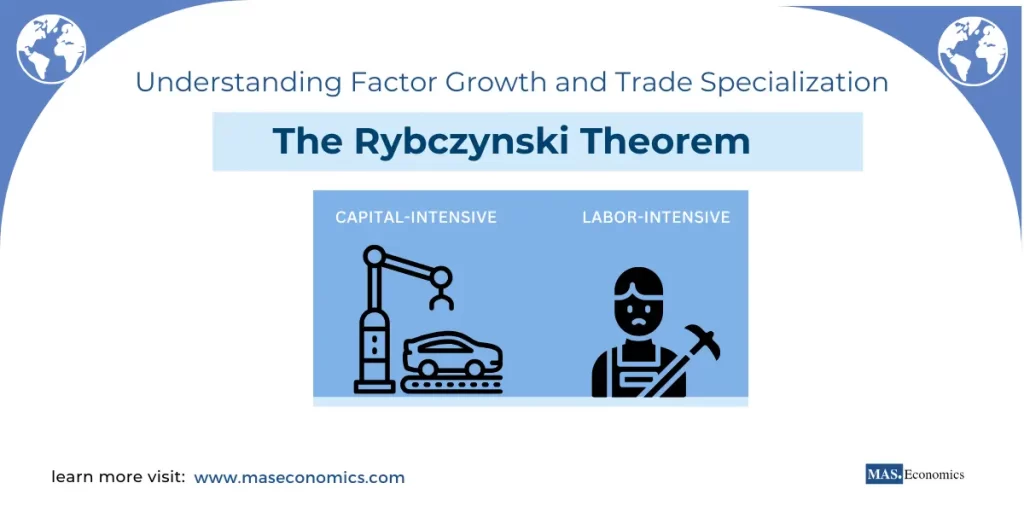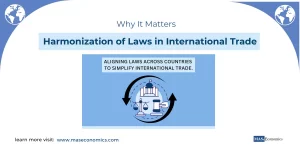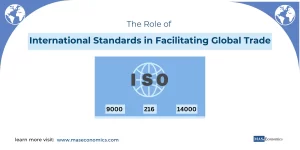The Rybczynski Theorem, introduced by economist Tadeusz Rybczynski in 1955, is a key concept in international trade theory that explains how changes in a country’s resources—like labor or capital—affect the production of different goods. This theorem helps illustrate how economic growth and shifts in factor endowments influence a country’s specialization and its role in international trade.
The Rybczynski Theorem reveals how changes in resource availability impact output and trade specialization, shedding light on how economies adapt to evolving factor supplies and how these adaptations shape international trade patterns.
What Is the Rybczynski Theorem?
The Rybczynski Theorem is part of the Heckscher-Ohlin framework of international trade. Essentially, it explains the relationship between changes in the availability of a production factor (like labor or capital) and the output levels of goods that use that factor intensively. The key takeaway from this theorem is that when one factor increases while keeping other factors constant, the production of goods that use the increasing factor more intensively will rise disproportionately, while the production of other goods will decline.
In simpler terms, if a country suddenly has more of one resource—such as labor or capital—it will see significant shifts in what it produces:
- Labor-Intensive Goods: If the available labor increases, the country will produce more goods that require a lot of labor.
- Capital-Intensive Goods: If capital increases, the production of goods that require a lot of capital will grow, while the production of labor-intensive goods might decrease.
These changes have profound implications for international trade, as countries may alter their specialization and export patterns in response to changes in resource availability.
Factor Growth and Its Impact on Production
To fully understand the Rybczynski Theorem, let’s consider a country producing two goods—cloth (a labor-intensive product) and machinery (a capital-intensive product). Assume that the country’s labor supply increases while its capital stock remains constant. How would this affect the production of cloth and machinery?
According to the Rybczynski Theorem, an increase in the labor endowment would lead to the following outcomes:
Expansion of Labor-Intensive Production
The increased availability of labor would be directed primarily towards producing more of the labor-intensive goods, which in this case is cloth. The country will now allocate more of its labor resources to cloth production, leading to a substantial increase in cloth output.
Reduction in Capital-Intensive Production
Since the capital stock has remained constant, the production of the capital-intensive good—machinery—will not be able to expand in the same way. In fact, some labor may be diverted away from machinery production towards cloth production, causing the output of machinery to decrease.
The overall effect is that the production possibilities of the country shift towards the good that utilizes the increasing factor—labor—more intensively. This shift in production ultimately affects what goods the country exports and imports.
Implications of the Rybczynski Theorem
The Rybczynski Theorem has several important implications for international trade:
Changes in Specialization and Trade Patterns
When a country experiences growth in one of its production factors, it tends to specialize more in goods that use that factor intensively. For instance, if a country’s capital stock grows significantly, it will start producing more capital-intensive goods like machinery, while reducing its production of labor-intensive goods like textiles. This means the country is likely to export more capital-intensive goods and import more labor-intensive goods, shifting its trade patterns accordingly.
The Rybczynski Theorem provides a clear explanation of how economic growth—through increases in labor or capital—can lead to changes in a country’s comparative advantage. A country with a growing labor force will increasingly specialize in labor-intensive production, while a country with a growing capital stock will specialize in capital-intensive production. These shifts lead to changes in export and import patterns, affecting the structure of international trade.
Factor Price Equalization
The Heckscher-Ohlin model, which forms the basis for the Rybczynski Theorem, suggests that countries with different factor endowments will engage in trade to equalize factor prices (such as wages for labor or returns on capital). However, the Rybczynski Theorem adds an interesting nuance: if the supply of one factor grows significantly, it could actually prevent factor price equalization from occurring.
For example, if a country that is already labor-abundant continues to expand its labor force, it may specialize even more heavily in labor-intensive goods. This specialization might keep wages low because the supply of labor continues to grow, and thus factor prices (like wages) might not converge with those in other countries. In this way, rapid growth in one factor can prevent factor price equalization across nations.
Economic Growth and the Offer Curve
The offer curve represents a country’s willingness to trade different quantities of goods at varying price levels. The Rybczynski Theorem suggests that economic growth that emphasizes one factor will shift the offer curve of a country.
If a country experiences growth in capital (e.g., increased investment in infrastructure), it will increase its production of capital-intensive goods and may export more of these goods.
Conversely, if a country experiences growth in labor (e.g., increased population or immigration), it will produce more labor-intensive goods and will shift its offer curve accordingly, reflecting its new capacity to trade labor-intensive goods.
The direction in which the offer curve shifts depends on the nature of the growth. Growth that increases the supply of a relatively abundant factor (e.g., labor in a labor-rich country) tends to enhance that country’s export capacity for goods that use that factor while reducing the production of goods that require other, less abundant factors.
Real-World Example
To see how the Rybczynski Theorem works in practice, consider an example involving China and capital growth.
China has undergone significant capital accumulation over the past few decades, with massive investments in infrastructure and manufacturing facilities. According to the Rybczynski Theorem, this increase in capital endowment should lead to a more than proportional increase in the output of capital-intensive goods, such as electronics and machinery, which indeed has been the case. At the same time, the production of labor-intensive goods—like basic textiles—has either decreased or grown more slowly.
As China accumulated more capital, it began to export high-value, capital-intensive products, shifting away from simpler, labor-intensive goods that were its primary exports in the past. This transformation illustrates how an increase in one production factor (capital) can reshape a country’s trade dynamics and lead to greater specialization in specific industries.
Rybczynski Theorem in Developing Economies
The Rybczynski Theorem also has significant implications for developing economies. Many developing countries are labor-abundant but have limited capital resources. If these countries experience population growth without corresponding growth in capital, the production of labor-intensive goods will increase significantly, while the production of capital-intensive goods may stagnate or decline.
This dynamic can lead to increased specialization in labor-intensive sectors, such as agriculture or basic manufacturing, limiting the country’s ability to diversify its economy. For these economies, gaining access to more capital—through foreign direct investment (FDI) or domestic savings—could help them transition to producing higher-value, capital-intensive goods, which could further improve their trade terms and economic development.
Limitations and Considerations
While the Rybczynski Theorem provides valuable insights, there are some limitations and considerations to keep in mind:
Constant Prices Assumption
The theorem assumes constant relative prices of goods, which is rarely the case in the real world. Changes in demand or supply can lead to price fluctuations that influence production and trade outcomes differently from those predicted by the theorem.
One Factor Growth
The Rybczynski Theorem considers the effects of growth in only one factor (e.g., labor or capital) while holding other factors constant. In reality, economies often experience changes in multiple factors simultaneously, which can lead to more complex outcomes.
Conclusion
The Rybczynski Theorem provides insight into how changes in factor endowments—such as increases in labor or capital—impact a country’s production and trade specialization. It shows how growth in one factor can lead to significant shifts in the production of goods that use that factor intensively, illustrating how nations adapt to evolving resources.
This understanding helps predict how changes in labor and capital affect production, exports, and international trade. Whether through capital investments or changes in labor supply, factor growth plays a crucial role in how economies adapt and succeed in a dynamic global market.
FAQs:
What is the Rybczynski Theorem in international trade?
The Rybczynski Theorem explains how changes in a country’s factor endowments, such as labor or capital, affect the production levels of goods. An increase in one factor (e.g., labor) leads to a disproportionate rise in the output of goods that use that factor intensively and a decline in the production of other goods.
How does factor growth impact production according to the Rybczynski Theorem?
If a production factor like labor increases while others (e.g., capital) remain constant, the country will allocate more resources to produce labor-intensive goods. Conversely, production of capital-intensive goods will decline due to resource reallocation.
What are the implications of the Rybczynski Theorem for trade specialization?
As a country’s resource endowments change, it may specialize in goods that intensively use its abundant factor. For instance, a country with increasing labor supply might export more labor-intensive goods, while reducing its focus on capital-intensive production.
How does the Rybczynski Theorem relate to economic growth?
Economic growth that expands one factor—such as capital accumulation—can lead to increased specialization in goods using that factor. For example, capital growth often leads to greater production and export of capital-intensive goods, reshaping trade patterns.
Can the Rybczynski Theorem explain real-world trade shifts?
Yes, real-world examples like China’s shift from labor-intensive goods (e.g., textiles) to capital-intensive goods (e.g., electronics) align with the theorem. China’s capital accumulation enabled it to specialize in high-value exports, demonstrating how changes in factor availability influence trade.
What is the significance of the theorem for developing economies?
The theorem highlights how labor-abundant developing economies may focus on labor-intensive goods. However, without capital growth, these economies may struggle to diversify into higher-value, capital-intensive sectors, limiting long-term economic advancement.
What are the limitations of the Rybczynski Theorem?
The theorem assumes constant prices and focuses on the growth of a single factor while holding others constant. In reality, changes in demand, prices, or multiple-factor endowments can produce more complex outcomes not fully captured by the theorem.
Thanks for reading! Share this with friends and spread the knowledge if you found it helpful.
Happy learning with MASEconomics




